Ausubel Lab People

|

|
Jenifer Bush
Greenhouse Manager
Education
Interests
I manage the plant growth facilities for the Ausubel and Sheen labs. Our facilities consist of numerous reach-in growth chambers, six controlled environment walk-in rooms, a plant tissue culture lab, and two greenhouses. When I'm not tending plants at work, I am caring for plants at my home greenhouse and gardens. I also keep bees and currently have 4 hives. |
| |

|
|
Yoon-Suk (Alex) Chung
EducationM.Sc., U. of Cologne, Germany
InterestsPathogen-host interactions and innate immune recognition
I am interested in the innate immune response of
Drosophila melanogaster(the fruit fly), in particular the mechanisms of phagocytosis of potentially harmful microorganisms by macrophage-like cells. My projects currently involve the characterization of Eater, a phagocytic pattern recognition receptor similar to mammalian class F scavenger receptors, in
Drosophilablood cells. |
| |
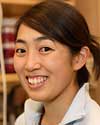
|
|
Nicole Clay
Research Fellow
EducationB.S., Massachusetts Institute of Technology; Ph.D., Yale University
InterestsPlant development and disease
I am interested in studying PAMP-triggered immunity in
Arabidopsisand its modulation by
P. syringaetype III effector proteins.
|
| |

|
|
Annie Lee Conery
Research Associate
EducationB.A., Pomona College; Ph.D., University of California at Berkeley
InterestsDeveloping high-throughput high content screening methods to carry out RNAi and chemical compounds screens with
C. elegans
I work with the Ruvkun and Ausubel labs, in collaboration with the Chemical Biology Platform and the Imaging Platform at the Broad Institute, to develop automated screening technology and methods to perform
C. elegansRNAi and chemical compound screens. We use automated worm sorting, liquid handling, image acquisition and image analysis to carry out high-throughput screens yielding high content data. We are currently exploring 1) RNAi screens to identify novel genes involved in metabolism and 2) chemical compound screens to identify novel anti-infectives as models to develop generally applicable methodologies to perform a wide range of screens using
C. elegansas a model organism. When I'm not in lab, I enjoy spending time with my friends and family. I can't resist a beautiful day outdoors, I love to read and I'm always looking for my next favorite restaurant. |

|
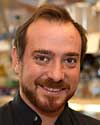
|
|
Cristian H. Danna
Research Fellow
EducationB.Sc., U. of Misiones, Argentina; Ph.D., U. of Buenos Aires-University of San Martin, Argentina
InterestsPlant-pathogen interactions
The human adaptive immune system produces antibodies in response to pathogen attack. This is a sophisticated mechanism that is useful to prevent humans from getting long-term infections and diseases. But is this system accountable for our health? Certainly not. Underlying antibodies is the more ancient and unnoticed innate immune system, which relies on preformed receptors for detecting pathogens and triggering a faster defense response. Plants, unlike humans, lack an adaptive immune system to defend themselves against pathogens. However, they are healthy primarily due to the innate immune system. I am studying diverse signaling pathways of
Arabidopsis thalianainvolved in the first line of response to pathogens. |
| |
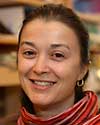
|
|
Carine Denoux
Research Technician
EducationM.Sc., University Louis Pasteur of Strasbourg (France)
Interests
Plant defense response & secondary metabolism
In plant-pathogen interactions, I am focused on theArabidopsis
defense response after treatment with elicitor. To study the signaling pathways of the Oligogalacturonides (OG) host-derived molecule, I use expression profiling (Affymetrix full genome Arabidopsis gene chips) and reverse genetics on marker genes of the OG response. |
| |
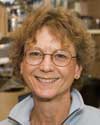
|
|
Julia Dewdney
Assistant in Molecular Biology
EducationBA, Smith College; PhD, Harvard University
InterestsPlant response to pathogens
In plants, the defense response to pathogen challenge is comprised of complex and interacting networks. A main goal of my research is to understand the controls that determine which responses will be activated in a particular plant/pathogen interaction. For instance, common molecular patterns that are associated with potential pathogens (eg, Flg22 or OGs) elicit characteristic sets of responses, which may be suppressed by pathogen virulence factors or enhanced by a plant’s recognition of additional pathogen-associated molecules. |
| |

|
|
Slavica Djonovic
Research Fellow
EducationB.S., University of Belgrade, Serbia; M.S., Colorado State; Ph.D., Texas A&M University
InterestsHost-pathogen interactions
It is generally believed that there has been extensive co-evolution of plant cell walls and corresponding cell wall degrading enzymes of microbial pathogens. To test this hypothesis, I wish to understand the innate cell-wall deconstruction ability of microbial pathogen
P. aeruginosaby using high-throughput automation assays to study the deconstruction of the model plant
Arabidopsis. This will lead to a better understanding of the processes during plant-pathogen interactions and to a better understanding of the co-evolution of plants and microbes and the evolution of an important class of microbial enzymes that play a key role in the carbon cycle. |
| |

|
|
Eliana Drenkard
Research Fellow
EducationB.Sc., Cordoba University, Argentina; Ph.D., Cordoba University, Argentina
Interests
Pseudomonas
biofilms, biofilm resistance mechanisms
My research is focused on understanding the mechanisms that mediate
P. aeruginosa
biofilm resistance in CF and chronic infections. In particular, I am studying the involvement of phenotypic variants resistant to antibiotics in biofilm formation and resistance mechanisms. I am currently analyzing mutants obtained from a genetic screen designed to identify genes involved in the formation of phenotypic variants and study their role in biofilm resistance. Moreover, I am complementing the mutant analysis with data obtained from DNA microarrays performed using phenotypic variants. |
| |
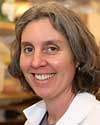
|
|
Rhonda Feinbaum
Assistant in Molecular Biology
EducationB.A., Reed College; Ph.D., Harvard University
Interests
Innate immunity
I am interested in understanding the pathogenic interaction of
Psuedomonas aeruginosa
with
C. elegans
as a simple model for bacterial infection. For several years, I have been involved in the identification of
C. elegans
innate immunity genes required for the response to pathogens. In addition, together with Nicole Liberati, I have recently embarked on a genome-wide screen to identify
P. aeruginosa
PA14 virulence factors required for infection of
C. elegans
. |
| |

|
|
Suresh Gopalan
Visiting Scientist
EducationB.E. (Hons) Mechanical Engineering, Birla Institute of Technology and Science, Pilani, India; Ph.D., Anna University, Madras, India
InterestsHost-pathogen interactions; high-throughput systems for studying host-pathogen interactions
Host organisms use evolutionarily conserved but diverse and often pathogen-dependent mechanisms of immunity. I am setting up model systems and studying interactions between the diverse immune systems to unravel responses that become apparent during such cross-regulation. I am also developing a plant-based high-throughput platform to study fundamentals of host-pathogen interactions and multiplexed analyses of many aspects of signaling. |
| |

|
|
Natasha Kirienko
Research Fellow
EducationBS, MS, Rostov State University; PhD, University of Wyoming
Interests
I work in the Ausubel and Ruvkun labs, using
C. elegansto study the conserved mechanisms of organismal defenses to stresses and infection with pathogens. In my spare time, I enjoy reading, hiking and swimming. |
| |

|
|
Christine Kocks
Associate Professor of Pediatrics
EducationPhD, University of Cologne, Germany
InterestsPathogen-host Interactions and innate immune recognition
I am interested in the molecular mechanisms that underlie the recognition and elimination of pathogenic bacteria. I use fruit flies to study a phagocytosis receptor related to class F scavenger receptors in humans. Recently, I joined the Ausubel laboratory in its quest for next-generation antibiotics. I try to identify molecules that block immune escape mechanisms in pathogenic bacteria. Such molecules may restore the activity of the evaded immunity pathways and thereby boost our immune system. |
| |

|
|
Pauline Lim
Administrative Assistant
EducationA.B., Visual and Environmental Studies, Harvard College
InterestsArt, music, biking, hiking, running, swimming, eating
Professional artist and musician (
http://www.paulinelim.net).
|
| |

|
|
Nicole Mammarella
Graduate Student
EducationB.S., Virginia Tech
InterestsPlant Innate Immunity
I'm a graduate student in the Biological and Biomedical Sciences Program at Harvard Medical School. My projects currently involve investigation of elicitor responsive signaling pathways and the role of the oxidative burst in defense responses. |
| |

|
|
Yves Millet
Graduate Student
EducationB.Sc., Ecole Normale Superieure de Lyon; M.Sc., University Louis Pasteur of Strasbourg
InterestsPlant response to pathogens
I am interested in plant secondary metabolism response to pathogens. The largest superfamily of proteins involved in
Arabidopsis thalianasecondary metabolism are the cytochromes P450. My main project is the characterization and the functionnal analysis of cytochrome P450s involved in
Arabidopsisresponse to pathogens using the two pathosystems
A.thaliana-Ps.syringaeand
A.thaliana-B.cinerea. |
| |

|
|
Julia Plotnikov
Assistant in Molecular Biology
EducationPh.D., Plant Physiology Institute, Russian Academy of Sciences; Dr.Sc., Main Botanical Garden, Russian Academy of Sciences
InterestsThe molecular and structural basis of host-pathogen interactions
I study various types of fungal and bacterial pathogens and their interactions with
Arabidopsismutants, transgenic plants and ecotypes. I have found a striking difference in infection strategies of biotrophic and necrotrophic pathogens in induction of diverse pathogenesis-related genes and metabolic pathways. I pay special attention to the resistance gene induction at the plant-pathogen interface. |
| |

|
|
Jonathan Urbach
Bioinformatics Specialist
EducationA.B. Cornell University; Ph.D. Harvard University
As part of an effort to discover new virulence genes in the the model pathogens
Pseudomonas aeruginosaand
Pseudomonas syringae, I've been working on bioinformatics tools for performing automated data analysis, and created web-accessible databases for the resulting data. Among these tools are some data-analysis pipelines to handle a high volume of sequence data from several projects, including the genomic sequencing of
Pseudomonas aeruginosastrain PA14, the construction of a non-redundant PA14 Transposon Insertion Mutant Library, and an exhaustive, high-throughput, DFI screen for novel Type III effectors in
Pseudomonas syringae. |
| |
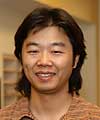
|
|
Gang Wu
Bioinformatics Specialist
EducationB.S., East China University of Science and Technology; M.S., Shanghai Jiaotong University; M.A., Brandeis University
InterestsComputational Biology
With completion of more genome sequencing projects, more data are available every day. Developing software systems to extract useful information from the huge amount of data is more important than ever. My interest is to build systems to facilitate promoter analysis, genomic analysis, transcription profiling analysis, etc. |
|

